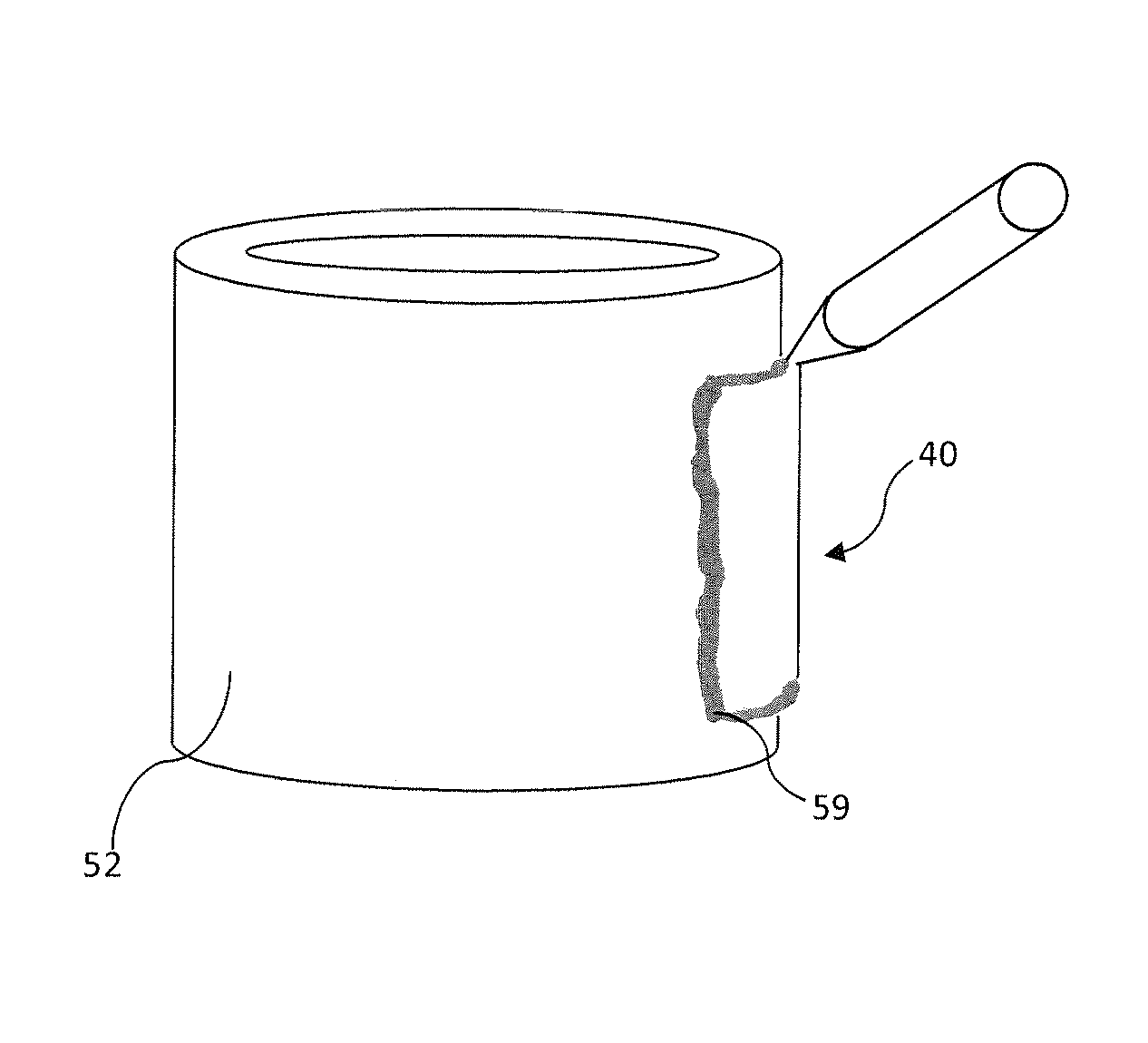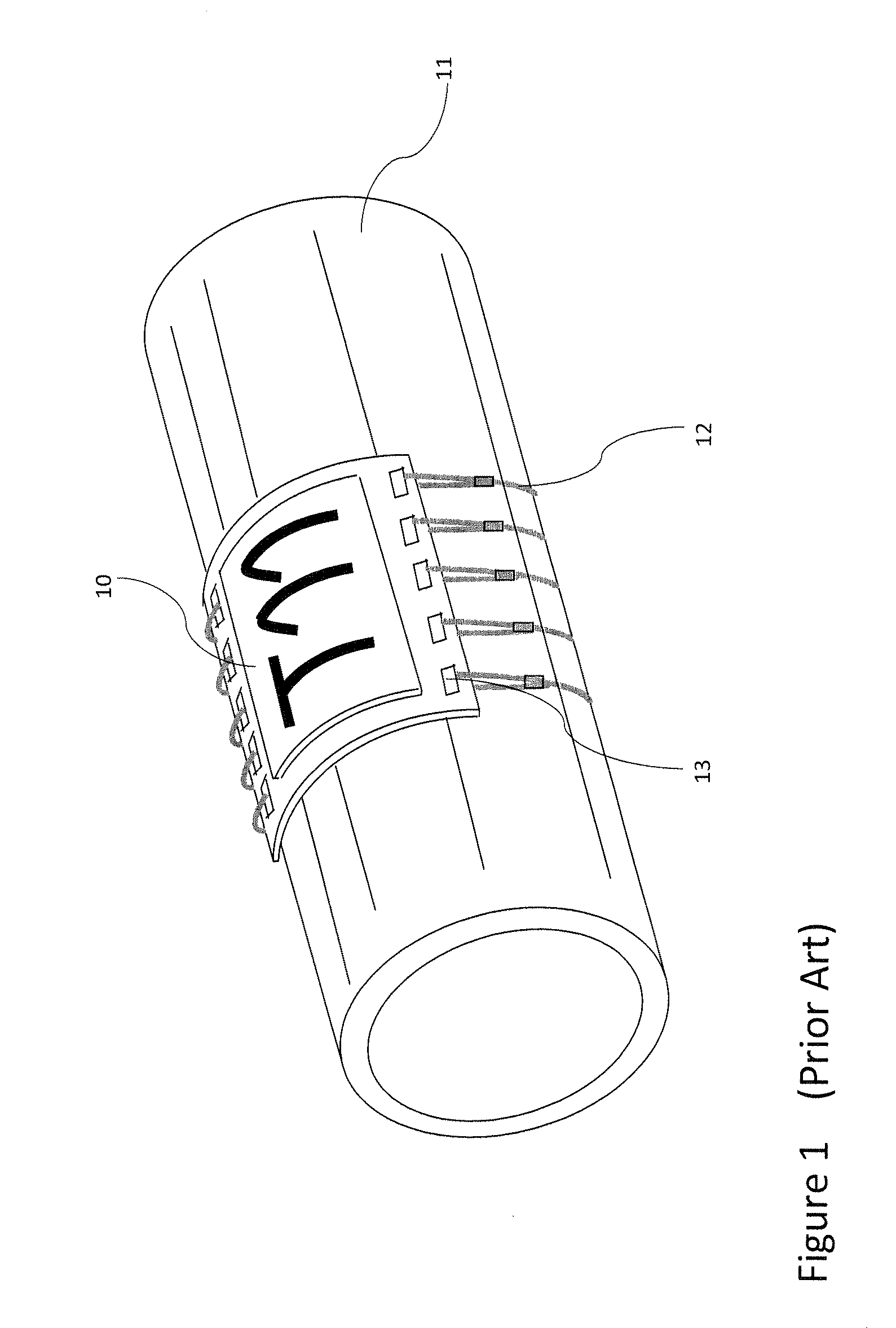Method of mounting subsea antifouling signs
a technology of anti-fouling signs and subsea structures, which is applied in the direction of lamination ancillary operations, lamination apparatus, instruments, etc., can solve the problems of signs becoming illegible, affecting the appearance of the sign, and difficulty in bonding the signs to the subsea object, so as to prevent or retard the deterioration of its adhesive properties, prolong the life, and reduce the corrosion rate of the subsea structure or equipment
- Summary
- Abstract
- Description
- Claims
- Application Information
AI Technical Summary
Benefits of technology
Problems solved by technology
Method used
Image
Examples
examples
[0080]Standard and aggressive immersion tests carried out on samples representative of this embodiment show their superior performance versus other methods of mounting an antifouling sign.
[0081]FIGS. 7A and 7B respectively show a sample and an experimental set-up for the performance of lap-shear adhesive tests. FIG. 7A shows a typical sample 70 representative of an adhesive bond between a subsea antifouling sign and an epoxy coated steel subsea structure suitable for carrying a lap-shear test. The sample 70 consists of a rectangular piece of epoxy coated steel 71 of known dimensions are known, bonded with adhesive 72 to a rectangular piece of subsea antifouling sign 73, such that the overlapping area has known dimensions.
[0082]FIG. 7B shows the sample 70 represented in FIG. 7A upon which a lap-shear adhesive test is being carried out as described in standard normative of the American Society of Testing Materials (ASTM) number D3165. The tests were carried out with a Testometric™ M35...
PUM
| Property | Measurement | Unit |
|---|---|---|
| Composition | aaaaa | aaaaa |
| Adhesivity | aaaaa | aaaaa |
| Impermeability | aaaaa | aaaaa |
Abstract
Description
Claims
Application Information
 Login to View More
Login to View More - R&D
- Intellectual Property
- Life Sciences
- Materials
- Tech Scout
- Unparalleled Data Quality
- Higher Quality Content
- 60% Fewer Hallucinations
Browse by: Latest US Patents, China's latest patents, Technical Efficacy Thesaurus, Application Domain, Technology Topic, Popular Technical Reports.
© 2025 PatSnap. All rights reserved.Legal|Privacy policy|Modern Slavery Act Transparency Statement|Sitemap|About US| Contact US: help@patsnap.com



